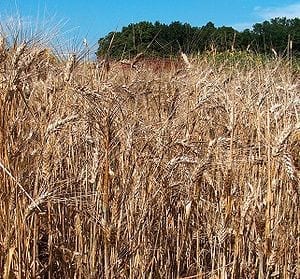
Increasing crop yields by up to 25 per cent in salinity-prone areas
A SALT-RESISTANT wheat variety developed by an Australian team through old-fashioned cross-breeding rather than genetic modification is increasing crop yields by up to 25 per cent in salinity-prone areas, and could help counter food security concerns.
Researchers from Adelaide University’s Waite Institute, the CSIRO and the NSW government first isolated the gene in an ancient relative of durum wheat — used to make couscous and pasta flour — 15 years ago.
The breakthrough was published in the international journal Nature Biotechnology overnight.
Senior author Matthew Gilliham said researchers had spent more than a decade using traditional cross-breeding techniques to blend the 10,000-year-old durum with its modern cousin to increase its salt resistance without genetic modification.
“Through domestication, there’s a lot of genetic diversity that has been lost,” Dr Gilliham said.
The Waite Institute researcher said salt generally built up in the leaves of the wheat plant, and as conditions became drier or in drought, it prevented growth through photosynthesis.
The salt-tolerant gene prevented sodium build-up in leaves, allowing it to increase growth and yields.
Dr Gilliham said up to 70 per cent of the nation’s wheat belt had highly saline soils.
“In prime wheat-growing areas such as Western Australia and South Australia, it’s predicted to get hotter and drier,” he said.
“When the soil is dry, the concentration of salt builds up. In up to 30 per cent of the world’s soils, salt builds up, as well.”
The saline-resistant durum has shown to increase yields in salt-prone areas by up to 25 per cent, but Dr Gilliham said it did not work as well in normal soils.
He said the wheat variety would go into commercial production and would be extremely helpful in countries that relied on grains to feed populations.
Read more . . .
Bookmark this page for “Cross-bred wheat” and check back regularly as these articles update on a very frequent basis. The view is set to “news”. Try clicking on “video” and “2” for more articles.







